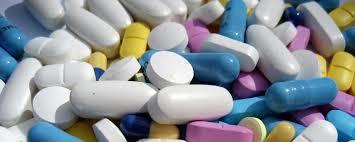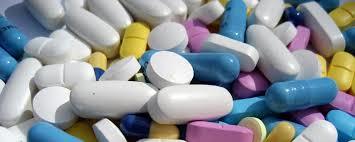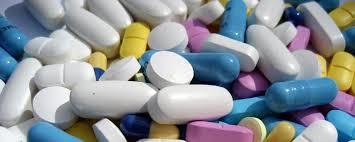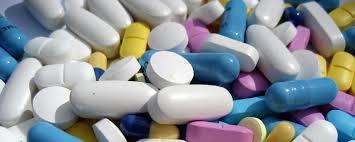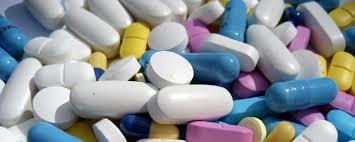
Cefpodoxime Proxetil & Ofloxacin Tablet
70 INR/Box
Product Details:
- Purity 98%
- Formulations Type General Drugs
- Formulations Form Tablets
- Gender/Age Group Adult Children
- Click to view more
X
Cefpodoxime Proxetil & Ofloxacin Tablet Price And Quantity
- 70 INR/Box
- 300 Box
Cefpodoxime Proxetil & Ofloxacin Tablet Product Specifications
- General Drugs
- Tablets
- Adult Children
- 98%
Cefpodoxime Proxetil & Ofloxacin Tablet Trade Information
- Cash in Advance (CID) Cash Advance (CA)
- 300 Box Per Month
- 1 Months
- Yes
- Sample costs shipping and taxes has to be paid by the buyer
- Western Europe Middle East Central America Eastern Europe South America Asia North America Australia Africa
- All India
Product Description
Cefpodoxime Proxetil is an orally administered, extended spectrum, semi-synthetic antibiotic of the cephalosporin class. Cefpodoxime It is active against most Gram positive and Gram negative bacteria. It is commonly used to treat acute otitis media, pharyngitis, and sinusitis.Ofloxacin is a synthetic chemotherapeutic antibiotic of the fluoroquinolone drug class considered to be a second-generation fluoroquinolone.
Indications:
â— Acute otitis media
â— Pharyngitis and/or tonsillitis
â— Community-acquired pneumonia
â— Acute bacterial exacerbation of chronic bronchitis
â— Acute, uncomplicated urethral and cervical gonorrhea
â— Acute, uncomplicated ano-rectal infections in women
â— Uncomplicated skin and skin structure infections
â— Acute maxillary sinusitis
â— Uncomplicated urinary tract infections (cystitis)
Rationale of Combination:
Product Description:
â— Unique Dual Mode Of Action
â— Ofloxacin-Prevents nucleic acid synthesis
â— Cefpodoxime-Inhibits cell wall synthesis
â— Acts synergetically
• Gives better patient compliance.
Pharmacology:
Advantages of Using Cefpodoxime Proxetil over other Cephalosporins:
Cefpodoxime is active against a wide spectrum of Gram-positive and Gram-negative bacteria. Cefpodoxime is stable in the presence of beta-lactamase enzymes. As a result, many organisms resistant to penicillins and cephalosporins, due to their production of beta-lactamase, may be susceptible to cefpodoxime.
Cefpodoxime Proxetil:
Mechanism of Action:
The bactericidal activity of cefpodoxime results from its inhibition of cell wall synthesis. The active metabolite of cefpodoxime binds preferentially to penicillin binding protein 3, which inhibits production of peptidoglycan, the primary constituent of bacterial cell walls.Cefpodoxime proxetil is a prodrug that is absorbed from the gastrointestinal tract and de-esterified to its active metabolite, cefpodoxime.
Pharmacokinetics:
Absorption: Following oral administration of 100 mg of cefpodoxime proxetil to fasting subjects, approximately 50% of the administered cefpodoxime dose was absorbed systemically.
Protein binding: 22 to 33% in serum and from 21 to 29% in plasma.
Elimination: Over the recommended dosing range (100 to 400 mg), approximately 29 to 33% of the administered cefpodoxime dose was excreted unchanged in the urine in 12 hours.
Half life: 2.09 to 2.84 hours.
Ofloxacin:
Mechanism of Action:
Ofloxacin is a broad-spectrum antibiotic that is active against both Gram-positive and Gram-negative bacteria. It functions by inhibiting DNA gyrase, a type II topoisomerase, and topoisomerase IV,which is an enzyme necessary to separate (mostly in prokaryotes, in bacteria in particular) replicated DNA, thereby inhibiting bacterial cell division.
Pharmacokinetics:
Absorption: Following oral administration, the bioavailability of ofloxacin in the tablet formulation is approximately 98%. Maximum serum concentrations are achieved one to two hours after an oral dose.
Elimination: Elimination is mainly by renal excretion. Between 65% and 80% of an administered oral dose of ofloxacin is excreted unchanged via the kidneys within 48 hours of dosing. Four to eight percent of an ofloxacin dose is excreted in the feces. This indicates a small degree of biliary excretion of ofloxacin.
Half life: 9 hours.
Adverse Effects:
â— Upset stomach
â— Diarrhea
â— vomiting
â— Mild skin rash
â— CNS stimulation (eg, convulsions, nervousness, anxiety)
â— Hypersensitivity reactions
â— Rarely: peripheral neuropathy.
Contraindications:
Cefpodoxime Proxetil:
â— Hypersensitivity reactions to cefpodoxime, other cephalosporins, penicillins, or other drugs.
â— If cefpodoxime is to be administered to penicillin sensitive patients, caution should be exercised because cross hypersensitivity among beta-lactam antibiotics has been clearly documented and may occur in up to 10% of patients with a history of penicillin allergy.
Ofloxacin:
â— Ofloxacin is contraindicated for the treatment of certain sexually transmitted diseases by some experts due to bacterial resistance.
â— Caution in patients with liver disease. The excretion of ofloxacin may be reduced in patients with severe liver function disorders (e.g., cirrhosis with or without ascites).
â— Ofloxacin is also considered to be contraindicated within the pediatric population, pregnancy, nursing mothers, patients with psychiatric illnesses and in patients with epilepsy or other seizure disorders.
Drug Interactions:
Cefpodoxime Proxetil:
Antacids:Concomitant administration of high doses of antacids (sodium and aluminum hydroxide) or H2 blockers reduces peak plasma levels by 24% to 42% and the extent of absorption by 27% to 32%, respectively. The rate of absorption is not altered by these concomitant medications. Oral anti-cholinergics (e.g., propantheline) delay peak plasma levels (47% increase in Tmax), but do not affect the extent of absorption (AUC).
Probenecid:As with other beta-lactam antibiotics, renal excretion of cefpodoxime was inhibited by probenecid and resulted in an approximately 31% increase in AUC and 20% increase in peak cefpodoxime plasma levels.
Nephrotoxic drugs:Although nephrotoxicity has not been noted when cefpodoxime proxetil was given alone, close monitoring of renal function is advised when cefpodoxime proxetil is administered concomitantly with compounds of known nephrotoxic potential.
Drug/Laboratory Test Interactions:Cephalosporins, including cefpodoxime proxetil, are known to occasionally induce a positive direct Coombs' test.
Take cefpodoxime tablets with food.
Ofloxacin:
Ofloxacin froms chelates with alkaline earth and transition metal cations when administrated with antacids containing calcium, magnesium or aluminium, with sucralphate, with divalent or trivalent cations such as iron, or with multivitamins containing zinc. Elevated serum levels of cyclosporine have been reported with concomitant use of cyclosporine with some other quinolones.
Warning and Precautions:
Cefpodoxime Proxetil:
â— Tell your doctor and pharmacist if you are allergic to cefpodoxime or any other cephalosporin antibiotic such as cefadroxil (Duricef) or cephalexin (Keflex), penicillin, or any other drugs.
â— Tell your doctor and pharmacist what prescription and nonprescription medications you are taking, especially other antibiotics, anticoagulants ('blood thinners') such as warfarin (Coumadin), probenecid (Benemid), and vitamins.
â— Tell your doctor if you have or have ever had kidney or liver disease, colitis, or stomach problems.
â— Tell your doctor if you are pregnant, plan to become pregnant, or are breast-feeding. If you become pregnant while taking cefpodoxime, call your doctor.â— If you are having surgery, including dental surgery, tell the doctor or dentist that you are taking cefpodoxime.
Ofloxacin:
â— Increased risk of tendinitis or tendon rupture esp. in patients >60yrs, or those with kidney, heart, or lung transplants.
â— CNS disorders (e.g., cerebral arteriosclerosis, epilepsy) that increase seizure risk. Discontinue if CNS effects, photosensitization, allergic reactions, peripheral neuropathy, or tendon pain, inflammation or rupture occurs.
â— History of QT prolongation or proarrhythmic conditions (eg, hypokalemia, bradycardia, recent MI). May mask symptoms of syphilis; test for syphilis before treating gonorrhea then follow-up after 3 months.
â— Maintain adequate hydration.
â— Avoid excessive sun or UV light. Monitor blood, renal, and hepatic function in prolonged use. Renal or severe hepatic impairment.
â— Pregnancy, nursing mothers: not recommended.
Tell us about your requirement

Price:
Quantity
Select Unit
- 50
- 100
- 200
- 250
- 500
- 1000+
Additional detail
Mobile number
Email


